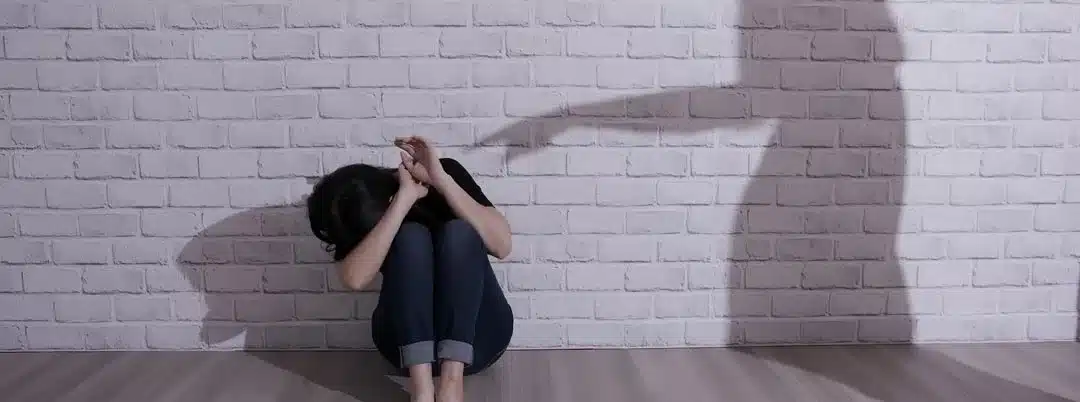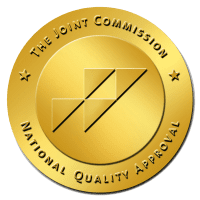It’s devastating to know that around 35 million children in America are exposed to adverse events that can lead to trauma.
Childhood is supposed to be a time of innocence and exploration, but for many individuals, it can be marked by traumatic experiences that leave a lasting impact. Childhood trauma can manifest in various ways in adulthood that affect a person’s mental and emotional well-being.
Everyone deserves to know when it’s time to get help and heal from the past. What are the most common signs of childhood trauma in adults? Read on so you can identify potential issues with your loved ones or even yourself.
1. Emotional Dysregulation
One of the most common signs of childhood trauma in adults is emotional dysregulation. Awful experiences during childhood can disrupt the development of healthy emotional regulation mechanisms.
Emotional trauma is often repressed through unhealthy coping mechanisms like drinking alcohol. When traumatic experiences are too overwhelming for a child to process, they may unconsciously bury these emotions and memories deep within themselves. These repressed traumas can resurface in adulthood, which causes emotional turmoil.
People who have repressed trauma often find it challenging to manage their emotions. They may experience the following:
- Intense mood swings
- Difficulty in controlling anger or anxiety
- Bouts or long spells of depression
These emotional fluctuations can have a profound impact on their personal and professional lives. It’s imperative to get to the root of the trauma in order to improve these emotional struggles.
2. Relationship Difficulties
Childhood trauma is so insidious that it can have a major impact on every relationship an adult has. Going through trauma as a child can lead to the following:
- A struggle with trust issues
- Fear of abandonment
- Difficulties in establishing emotional connections
They might find themselves in a cycle of toxic or abusive relationships that replicate patterns from their childhood experiences. Lots of traumatized adults seek out familiar dynamics even if they continue to harm them.
Overcoming trauma isn’t easy if you can’t let your guard down around others. Doing your best to address childhood trauma is crucial for building healthier relationships, though. Therapy and even support groups can provide valuable tricks to help people break free from negative relationship patterns and cultivate more positive, supportive connections.
3. Self-Esteem and Self-Worth Issues
Another telltale sign of childhood trauma in adults is low self-esteem and self-worth issues. Traumatic experiences often lead individuals to believe that they are unworthy or that they deserve pain and suffering. This deep-seated belief can result in the following:
- Self-sabotaging behaviors
- Self-doubt
- A constant need for external validation
These individuals may struggle to see their own value and may continually undermine their own potential for success and happiness. Building self-esteem and self-worth involves challenging and reframing the negative beliefs rooted in childhood trauma. Therapy and self-help techniques can be instrumental in helping individuals recognize their value and potential.
4. Persistent Anxiety and Fear

Persistent anxiety and fear can be a lasting impact of childhood trauma. Traumatic experiences often create a heightened state of vigilance, where individuals are constantly on edge, anticipating danger or harm. Anxiety alone may not be a telltale sign of childhood trauma since it’s a common issue, though.
This chronic anxiety can manifest as panic attacks, phobias, and generalized anxiety disorder. It wreaks havoc on a person’s mental health and overall wellness.
Anxiety is a common manifestation of repressed trauma. The unresolved fear and stress associated with past traumatic experiences can trigger anxiety disorders. By addressing and processing the repressed trauma through treatment, individuals can often alleviate their anxiety symptoms.
5. Physical Symptoms and Health Issues
Childhood trauma doesn’t only affect mental health. It can have profound physical repercussions as well. Adults who have experienced childhood trauma may be more susceptible to these various health problems:
- Chronic pain
- Autoimmune disorders
- Gastrointestinal issues
The mind-body connection is strong, and unresolved emotional trauma can manifest in physical symptoms. Addressing the physical symptoms of childhood trauma involves a holistic approach that combines medical treatment with therapy and stress-reduction techniques. Many adults are blown away by how much better their bodies feel after they spend time taking care of their minds.
6. Addiction and Substance Abuse Struggles
Many adults who have experienced childhood trauma end up with diagnosable addiction issues because they use substances as a coping mechanism. The pain, fear, and anxiety associated with traumatic experiences can drive individuals to seek solace in drugs or alcohol. This vicious cycle of addiction only further compounds their emotional and psychological struggles, though.
Treating addiction and substance abuse in the context of childhood trauma requires a dual approach. Addressing both the addiction and the underlying trauma is essential for long-term recovery. Support from addiction specialists and therapists can empower adults to break out of the cycle of trauma and substance abuse.
It’s worth learning about the different rehab options out there. Doing a detox or checking in for a longer stay could be what you need to heal. Looking into AHCCCS rehab programs such as our offerings can help if you are an Arizona resident who qualifies, making these treatments more affordable.
7. Flashbacks and Intrusive Memories

Repressed traumatic memories can resurface in the form of flashbacks and intrusive thoughts. These sudden, vivid recollections of traumatic events can be quite distressing. They’re harmful enough to disrupt a person’s everyday life.
Flashbacks often occur when something in the present triggers a memory from the past. It causes the person to freeze up as they relive the trauma. Flashbacks are a clear indication of repressed trauma.
The mind is attempting to process and release the buried emotional trauma and memories. This causes them to intrude into consciousness. Addressing the repressed trauma is vital for reducing the frequency and intensity of these distressing experiences.
8. Strong Avoidance Behaviors
It’s not unusual for traumatized adults to develop avoidance behaviors as a coping mechanism. They may actively avoid situations, places, or people that remind them of their traumatic past.
While avoidance can provide temporary relief, it can also hinder personal growth. It can even prevent them from addressing their unresolved trauma. Avoidance behaviors can manifest in several ways:
Social Isolation
Trauma survivors may isolate themselves from friends and family. They often fear that emotional closeness will lead to vulnerability and pain.
Procrastination
Individuals may put off important tasks or responsibilities. They want to avoid the associated stress and anxiety. This can lead to difficulties in their personal and professional lives.
Escapism
Some may turn to activities like excessive gaming, binge-watching, or substance abuse. Their goal is to escape from their thoughts and feelings.
Recognizing avoidance behaviors is the first step to overcoming them. Therapy, particularly exposure therapy, can be helpful. People can gradually confront and desensitize themselves to their trauma triggers.
Learning healthy coping mechanisms is also essential. People need self-regulation techniques.
9. Perfectionism
Perfectionism is another sign of childhood trauma in adults. Traumatic experiences can lead people to develop a strong need for control and perfection. They do this as a way to feel safe and avoid criticism.
Perfectionism is a hard trait to pinpoint as problematic. Usually, striving for goodness is an amazing quality. When it’s taken to extremes, it can become a self-destructive pattern.
Signs of perfectionism include:
Overworking
Perfectionists often work excessively to ensure everything meets their high standards. This often leads to burnout. Burnout can sabotage both your overall mental health and professional work.
Fear of Failure
People freeze up when they think about making mistakes or failing. This fear can prevent people from taking healthy risks.
Chronic Self-Criticism
Perfectionists are their own harshest critics. This can lead to constant feelings of inadequacy and anxiety.
How can people break free from perfectionism? It involves challenging self-defeating beliefs and finding balance.
Cognitive-behavioral therapy (CBT) and self-compassion exercises can be beneficial. People can foster a healthier relationship with achievement and self-worth.
10. Emotional Numbness

Childhood trauma can lead to emotional numbness in adults. People may disconnect from their emotions. This is an effort to protect themselves from the overwhelming emotional pain.
They might find it challenging to express or even identify their feelings. This leaves them with a pervasive sense of emptiness. Emotional numbness can manifest as follows:
Apathy
People may become disinterested in all the things that once brought them joy. They lose their motivation and enthusiasm for life.
Depersonalization
Some people may experience depersonalization. This is where they feel detached from their own body or emotions.
Difficulty in Empathy
It can be challenging to connect with and understand the emotions of others. This makes it tricky to maintain healthy relationships.
Addressing emotional numbness involves learning to reconnect with one’s emotions. Therapy and mindfulness practices can help people. They’ll regain a sense of emotional awareness and authenticity.
11. Big Trust Issues
Childhood trauma can affect a person’s ability to trust others in a profound way. Those who have experienced betrayal or abuse during their formative years may find it challenging to establish trust in their adult relationships. This lack of trust can create barriers to forming deep connections and can lead to feelings of isolation.
Some signs of trust issues include the following:
Hyper-vigilance
People may find themselves always on guard. They expect betrayal or harm from others.
Difficulty in Vulnerability
Trust issues often make it difficult to open up and share emotions with others. They’re always looking for red flags where there may not be any.
Testing Relationships
Some people may test the loyalty of their friends and partners. This isn’t a healthy behavior since it hurts people’s feelings. People end up unintentionally pushing others away.
Rebuilding trust is a gradual process. Therapy, particularly relational therapy, can be effective in addressing trust issues. It can help people form healthier, more secure attachments.
12. Self-Sabotaging Behavior
Self-sabotage is a destructive pattern that often stems from childhood trauma. Awful experiences can make people believe that they don’t deserve happiness or success. This causes them to unconsciously undermine their own efforts.
Self-sabotage can manifest in various ways:
Procrastination
People may delay or avoid tasks that could lead to personal growth or success. Then, not meeting their goals gives them more reasons to feel bad about themselves.
Squandering Opportunities
People could miss out on opportunities due to self-doubt and fear of failure. Wondering about what they’re missing out on could haunt them for years.
Sabotaging Relationships
People push others away. They could also engage in behaviors that harm relationships.
How can you address self-sabotage? It involves identifying the underlying beliefs and fears that drive this behavior. Therapy, particularly cognitive-behavioral therapy, can be instrumental in helping people break free from self-sabotaging patterns and develop healthier habits.
13. Dissociation

Dissociation is a coping mechanism often seen in individuals who have experienced severe childhood trauma. It involves a disconnection from the following:
- Reality
- One’s own body
- Emotional experiences
This is a way to endure the traumatic event. Dissociation can provide temporary relief. It can make people feel detached from themselves and their surroundings in the long run, though.
Signs of dissociation include the following:
Feeling Like an Observer
This is a sense of watching oneself from the outside. It’s as if one is not fully present in the moment.
Memory Gaps
This is an inability to recall significant portions of one’s past. These gaps are often related to the traumatic event.
Depersonalization
This is the feeling of disconnectedness from one’s own body or physical sensations. It’s alarming when people experience it.
Addressing dissociation is complex. It often requires specialized therapy. These techniques can help people feel in tune with their bodies and regain a sense of presence:
- Grounding exercises
- Body-awareness practices
- EMDR
These Are the Most Common Signs of Childhood Trauma in Adults
Recognizing the signs of childhood trauma in adults is the first step toward healing and personal growth. Repressed traumatic experiences can have a lasting impact on a person’s mental and emotional well-being. With the right support, it’s possible to heal from childhood trauma and build a brighter, more fulfilling future.
Have traumatic experiences in your past caused you to struggle with addiction issues? Purpose Healing Center has a mission to help every patient feel empowered enough to overcome trauma and addiction. Contact us to chat about our incredible programs, what we treat, and more.



